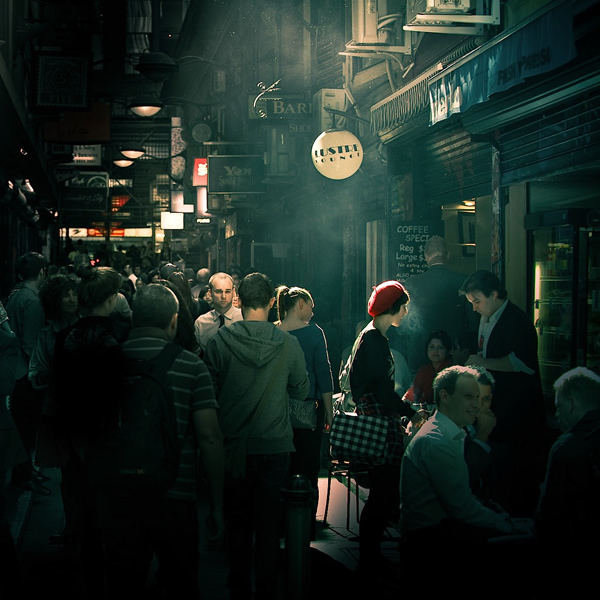Some Known Questions About Street Photographers.
Table of ContentsSome Known Details About Street Photographers About Street Photographers9 Simple Techniques For Street PhotographersStreet Photographers Fundamentals ExplainedSome Known Factual Statements About Street Photographers
A category of digital photography that records everyday life in a public area. The very publicness of the setup makes it possible for the photographer to take candid photos of strangers, typically without their understanding. Road professional photographers do not necessarily have a social function in mind, but they favor to isolate and capture minutes which might or else go unnoticed (Street Photographers).He was influenced by numerous of those who influenced the road professional photographers of the 1950s and '60s, he was not mainly interested in catching the spirit of the street., who worked side by side with professional photographers trying to capture the significance of metropolitan life.
As a result of the fairly primitive modern technology readily available to him and the lengthy exposure time called for, he had a hard time to catch the pressure of the Paris streets. He tried out with a series of photographic techniques, attempting to discover one that would allow him to catch motion without a blur, and he located some success with the calotype, patented in 1841 by William Henry Fox Talbot. Unlike Atget, digital photographer Charles Marville was hired by the city of Paris to produce an encyclopaedic record of Haussmann's city planning project as it unravelled, hence old and new Paris. While the professional photographers' topic was essentially the same, the results were considerably different, showing the effect of the digital photographer's bent on the personality of the photos he created.
Offered the fine top quality of his pictures and the breadth of material, designers and musicians commonly bought Atget's prints to use as referral for their own job, though business rate of interests were hardly his major inspiration. Rather, he was driven to photo every last remnant of the Paris he liked.
A Biased View of Street Photographers
They reveal the city via his eyes. His work and basic understanding of photography as an art kind worked as motivation to generations of professional photographers that followed. The following generation of road digital photographers, though they likely did not describe themselves thus, was ushered in by the photojournalism of Hungarian-born photographer Andr Kertsz.
Unlike his peers, Brassa utilized a larger-format Voigtlnder electronic camera with a much longer exposure time, forcing him to be a lot more calculated and thoughtful in his technique than he could have been if making use of a Leica. (It is assumed that he may not have been able to afford a Leica back then, see page yet he did, nevertheless, make use of one in the late 1950s to take colour pictures.) Brassa's photographs of the Paris abyss lit up by artificial light were a revelation, and the collection of the collection that he published, (1933 ), was a major success.
Cartier-Bresson was a champ of the Leica electronic camera and among the initial digital photographers to maximize its capabilities. The Leica permitted the professional photographer to interact with the environments and to catch minutes as they occurred. Its reasonably little dimension likewise aided the photographer discolor right into the background, which was Cartier-Bresson's favored method.
Not known Factual Statements About Street Photographers
It is because of this essential understanding of the art of picture taking that he is often credited with finding the medium all over again approximately a century because its invention. He took photographs for more than a half century and influenced generations of professional photographers to trust their eye and intuition in the moment.
These are the concerns I will attempt to address: And after that I'll leave you with my very own meaning of street digital photography. Yes, we do. Let's kick off with specifying what an interpretation is: According to (Street Photographers) it is: "The act of defining, or of making something guaranteed, distinctive, or clear"
No, absolutely not. The term is both limiting and misdirecting. Appears like a road digital photography must be images of a roads best?! And all street photographers, besides a tiny number of outright beginners, will totally appreciate that a road is not the crucial element to street photography, and actually if it's a photo of a street with possibly a few uninteresting people doing nothing of rate of interest, that's not road digital photography that's a picture of a road.
Street Photographers Things To Know Before You Buy
He makes a valid point don't you assume? Nonetheless, while I agree with right here him I'm Visit This Link not certain "candid public digital photography" will certainly capture on (although I do kind of like the term "candid digital photography") since "road digital photography" has actually been around for a long period of time, with numerous masters' names connected to it, so I think the term is here to stay.
You can fire at the coastline, at a celebration, in an alley, in a park, in a piazza, in a cafe, at a gallery or art gallery, in a city terminal, at an occasion, on a bridge, under a bridge ...
Yes, I'm afraid we terrified no choice! Without regulations we can not have a meaning, and without an interpretation we do not have a genre, and without a category we don't have anything to specify what we do, and so we are stuck in a "policies interpretation category" loop!
Unknown Facts About Street Photographers
